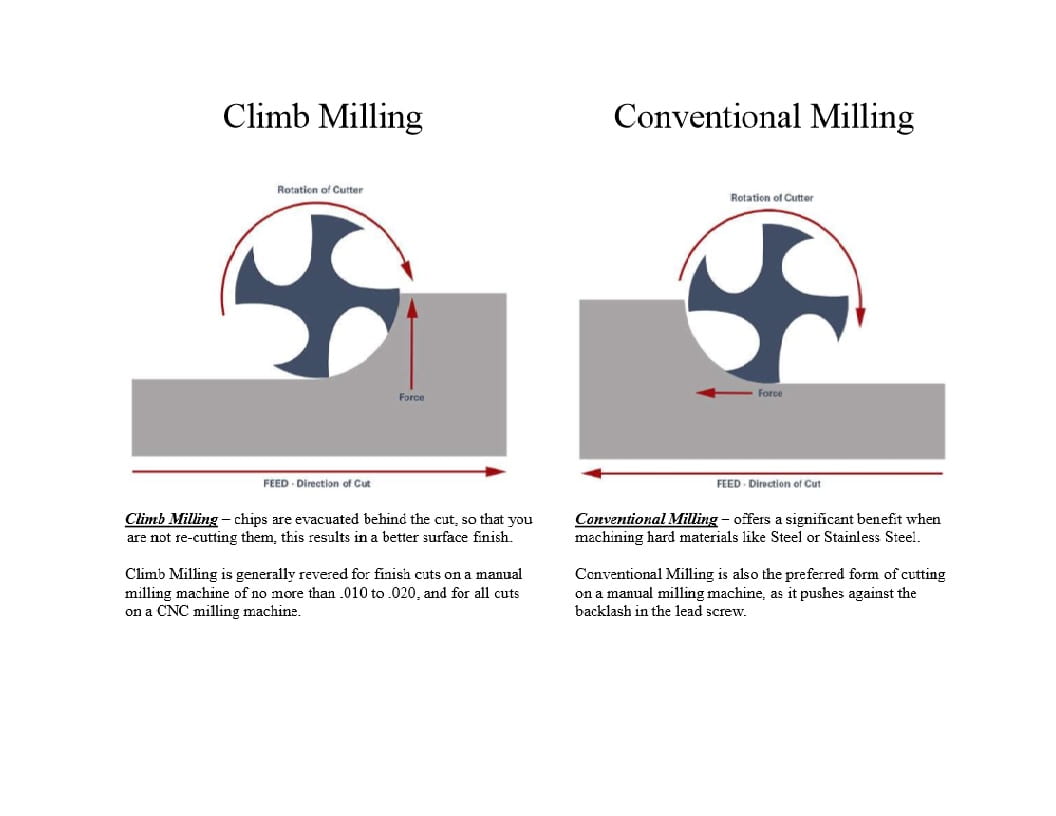
Climb Milling vs Conventional Milling

Conventional milling is the traditional approach when cutting because the backlash, or the play between the lead screw and the nut in the machine table, is eliminated. Recently, however, climb milling has been recognized as the preferred way to approach a workpiece due to the fact that more and more machines compensate for backlash or have a backlash eliminator.
Conventional Milling:
- Chip width starts from zero and increases which causes more heat to diffuse into the workpiece and produces work hardening
- Tool rubs more at the beginning of the cut causing faster tool wear and decreases tool life
- Chips are carried upward by the tooth and fall in front of cutter creating a marred finish and re-cutting of chips
- Upwards forces created in horizontal milling tend to lift the workpiece, more intricate and expansive work holdings are needed to lessen the lift created
Climb Milling:
- Chip width starts from maximum and decreases so heat generated will more likely transfer to the chip
- Creates cleaner shear plane which causes the tool to rub less and increases tool life
- Chips are removed behind the cutter which reduces the chance of re-cutting
- Downwards forces in horizontal milling are created that help hold the workpiece down — less complex work holdings are need when coupled with these forces